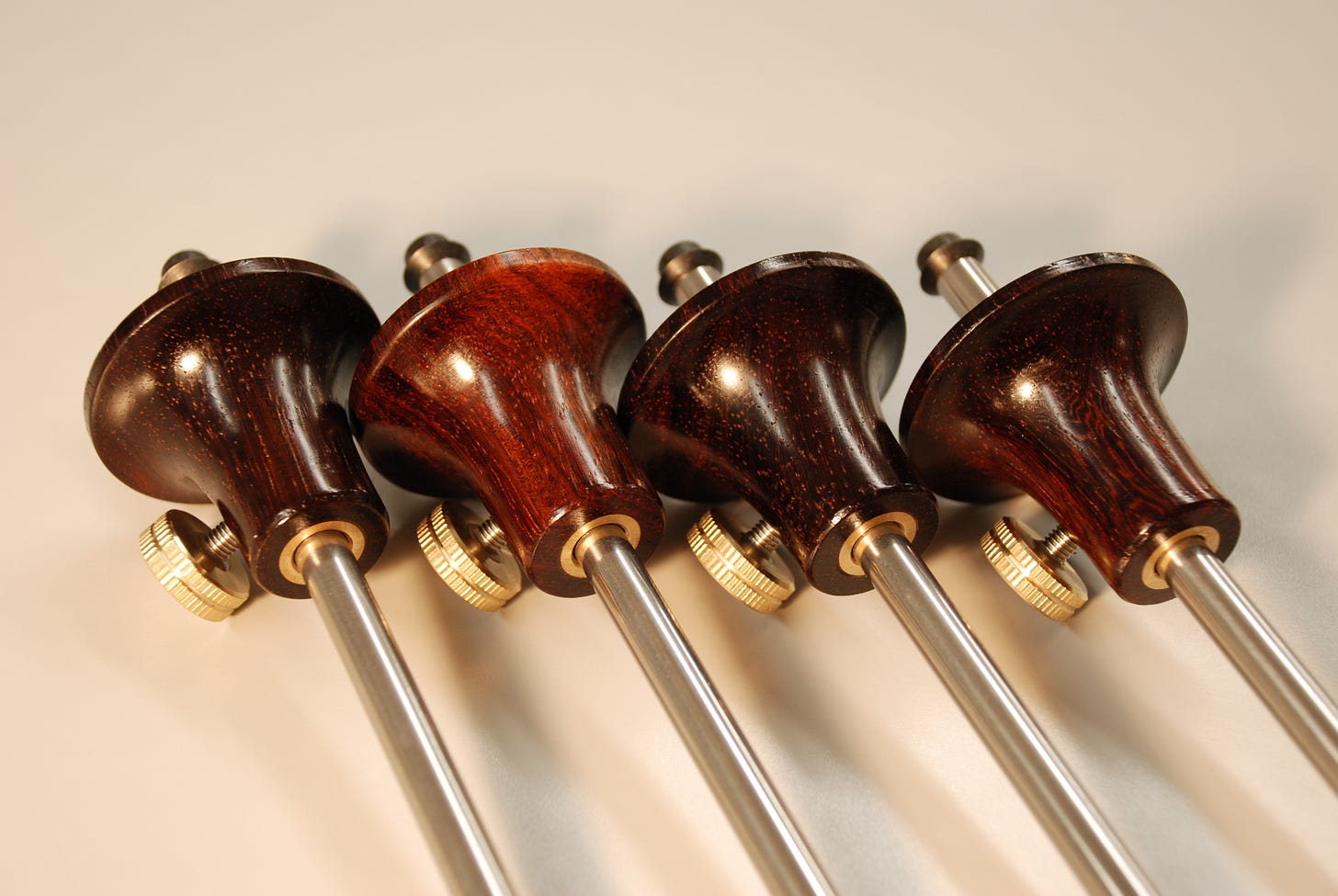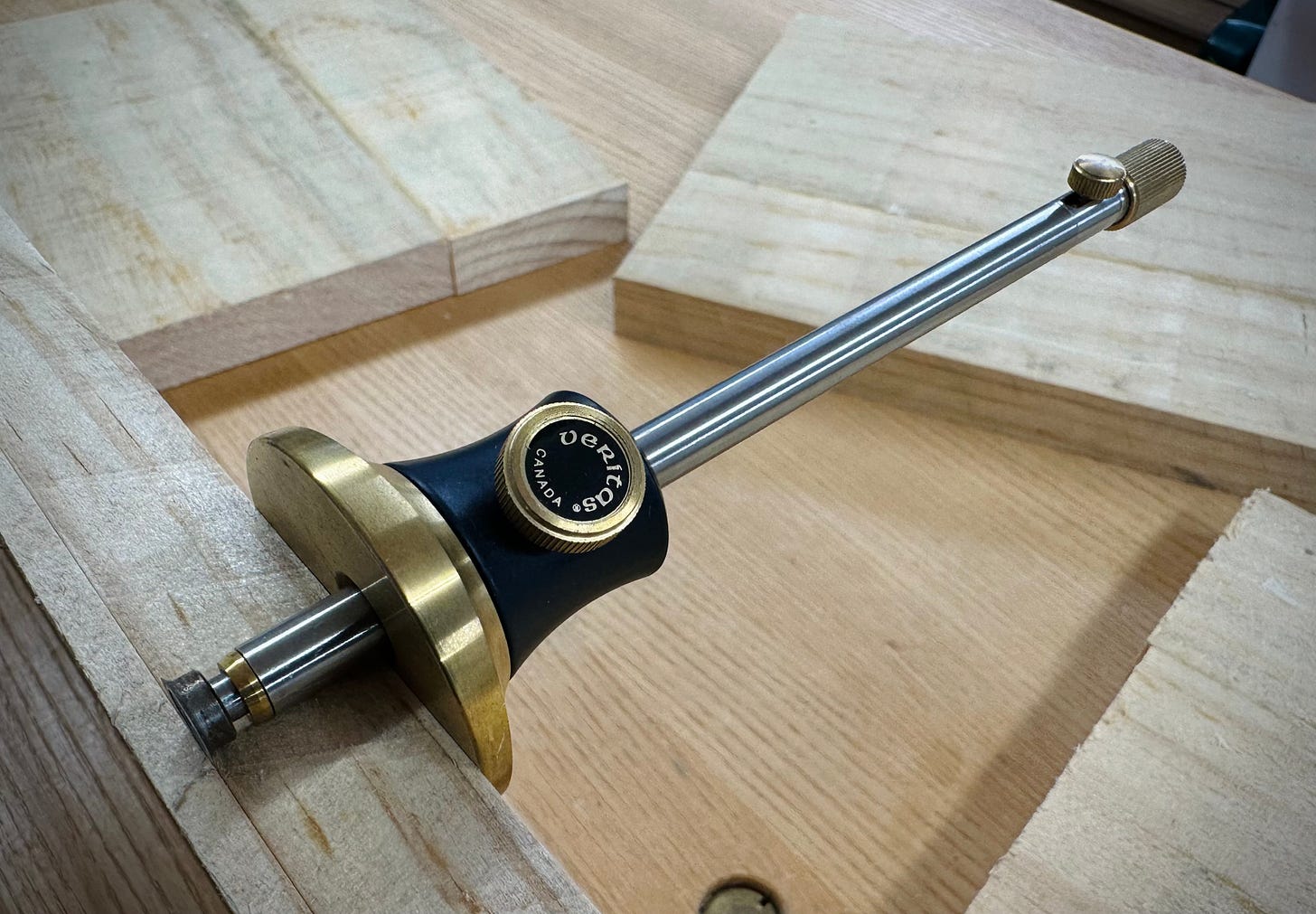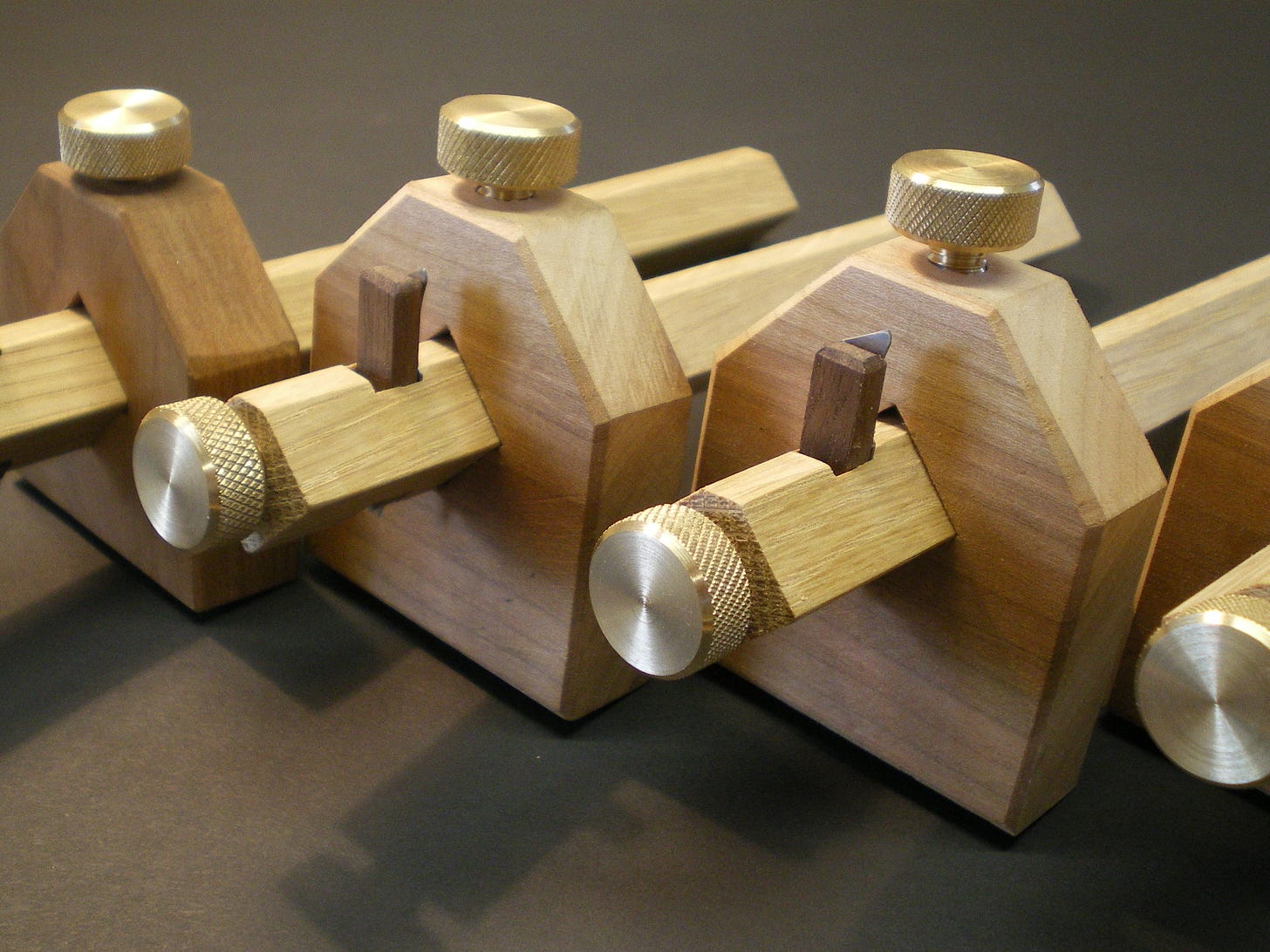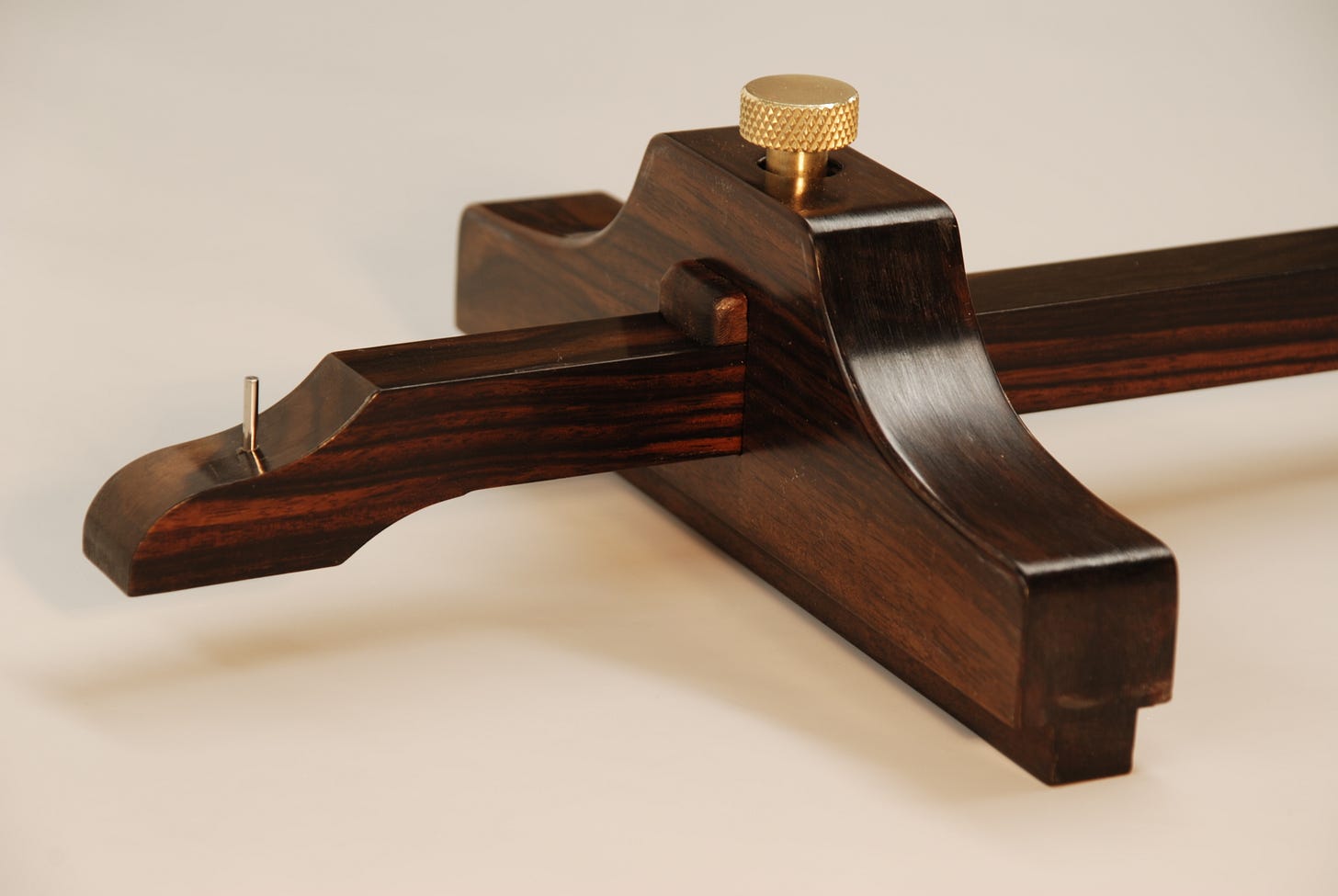Back in 2008 I had a conversation with David Charlesworth at a Classic Hand Tools event at West Dean College. We got to talking about marking gauges and had some similar thoughts on them. Mainly that most of the time what we need is a cutting gauge, not a traditional marking gauge at all. I introduced David to my 2007 article in Furniture and Cabinetmaking magazine about making marking gauges. He was kind of intrigued by the idea of using a scalpel blade as the cutting edge, but mostly he humoured me and was too polite to say what he really thought of the article. I think he mainly thought he should go and smoke a nasty roll-up, so the conversation came to an end.
There’s a guy down my street who looks like the lesser-known brother that didn’t make it into the Bee Gees. Not knowing his name, we’ve always privately referred to him as David Charlesworth as shorthand. It’s kind of nice to feel as though DC lived on my street for many years, if only in a fantasy construct. I won’t tell you what I call my other neighbours, this is a litigious society after all. Plus Council Wanker probably wouldn’t appreciate it.
These are the gauges from the Christmas 2007 article (you’ll find it in F&C 135 if you’re a glutton for punishment). Originally they just had M8 stainless bolts as the locking screws, but in time I got fancy and made my own brass thumbscrews. I still use this set of gauges today. The design allows the blade to be swapped for a pencil.
I clearly had a busy year in 2008, as I also started the Hand Tool Secret Santa on the UK Workshop forum. I was inspired by the guys on Woodnet and what they did with it, which I thought the UK could emulate. Most other aspects of Woodnet can remain on Woodnet mind you. In the first year I made a number of wheel type marking gauges, two of which were my offering to the inaugural Secret Santa. Although I’ve made a few of these over the years, to be honest I’ve never entirely got on with this type of gauge. And yes, I have owned a Tite-Mark and a few different Veritas variants.

In the same Secret Santa I received a panel gauge made of Cocobolo. I’ve found in these events you get a lot of screwdriver bit holders being made, so really I was pretty fortunate. There’s only so many screwdrivers you need. In my new hand tool focussed world I might even use this properly for the first time. In the 14 years I’ve had it the main thing I’ve done with it is knock it off the peg it hangs on. Despite that it remains in one piece, so is clearly well made. I only ran the Secret Santa for a couple of years, but it has carried on since. I think the principle of making hand tools might have got a bit lost along the way, but people still seem to enjoy it.
I’m coming to realise that for the hand tool woodworker marking gauges have far more significance than they do for a machine user. For many years as a so-called blended woodworker I think the most common use I had for marking gauges was to cut baselines for dovetails. An occasional one night stand if you will, in comparison to the meaningful relationship a hand tool woodworker might have with the same tool. In my former world many operations relied on the fences or guides of machines to set cut parameters. For the hand tool guys every joint, plus many other operations require them to pick up a marking gauge.
Dovetail baselines are a cross-grain cut which my scalpel blade gauges do well. The long-grain marks required for hand thicknessing can be less visible when cut with the same tool due to the fine blade. So for Part One of the Schoolbox I used the Veritas micro-adjust wheel gauge and found it worked fairly well. I do find the round blades create a lot of drag when pulling with the grain however. I’ll try a few different types of gauge on this project and see what works best for me.

Now if you can excuse me, I need to go and see what Pink Car Dickhead is doing parking right opposite my driveway.




These are gorgeous. I'm opening a small hand tool tool works and these are certainly something to aspire to. I wish I could do the brass work as well, but that's probably not in the cards. They really are beautiful.